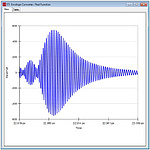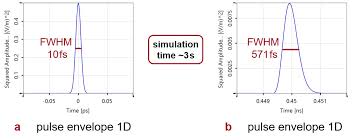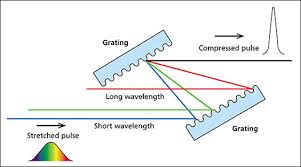
ulrashort pulse

ultrashort pulse

ultrashort pulse

pulse stretching & compression
Ultrashort pulse propagation, pulse shaping, stretching and compression
VirtualLab Fusion Basic, or
VirtualLab Fusion Advanced -
includes FMM/RCWA for rigorous grating analysis
The VirtualLab Fusion Starter Toolbox can simulate pulse propagation through optical systems, including: lenses, gratings and micro-optical elements.
VirtualLab Fusion Advanced -
includes FMM/RCWA for rigorous grating analysis
The VirtualLab Fusion Starter Toolbox can simulate pulse propagation through optical systems, including: lenses, gratings and micro-optical elements.
In addition to simulating propagation through various mediums, the Starter Toolbox can model pulse shaping and pulse stretching
and compression.
Pulses are represented by sets of harmonic fields. Fast Physical Optics in VirtualLab Fusion provides, fully vectorial pulse
information.
A Pulse Evaluation Detector can be placed in the light path to show the pulse shape. The detector generates pulse information for
the Ex, Ey and Ez components of the electromagnetic field. Spectral and temporal pulse profiles are shown, taking into account
broadening due to material dispersion and angular dispersion.
The evaluation can be in 1D, 2D and 3D, and 3D pulse information can be converted into an animation.
Ideal pulse shaping can be modeled by changing parameters in the Ideal Pulse Shaper Editor and by a programmable component.
Using frequency filters, temporal pulse shaping can be modeled both with and without spatio-temporal coupling.
Using a programmable component spectral amplitude or spectral phase can be modulated. Spatial dispersion, group delay,
and group delay dispersion can be switched on or off to include or exclude spatio-temporal coupling and temporal chirp.
Pulse front tilt can be shown in the spectral and temporal domains.
Pulse stretching and compression can also be modeled in VirtualLab Fusion. Ideal pulse stretchers and compressors are modeled
by transmission functions to introduce wavelength-dependent phase shifts. The phase shifts are obtained by the optical paths of
the light through the stretcher and the compressor.
A programmable component is used to define parameters, such as: the stretcher input.
The Parameter Run in VirtualLab Fusion can be used to investigate and optimize pulses. Angles, distances, lateral offsets,
and detector parameters can be varied over a minimum/maximum range of user-defined values.
Analysis results are stored in XML files.
Parameters can be varied in four ways:
- standard mode: linear variation of selected parameters between minimum and maximum values
- programmable mode: customized parameter values per variation step. A table with the parameter values per variation step is filled by a program snippet
- scanning mode: scan of all possible parameter combinations
- random mode: random Monte Carlo variation of parameters between minimum and maximum values
Analysis results are stored in XML files.
To rigorously design and optimize gratings, such as gratings in pulse stretchers and compressors, VirtualLab Fusion Advanced is needed,
because it includes the Grating Toolbox program. That uses Fourier Modal Method (FMM) - also called Rigorous Coupled Wave Analysis
(RCWA)- for rigorously modeling periodic structures.
The lightpath in the VirtualLab Fusion Advanced program can include the gratings, source, all other optical elements, detectors and analyzers for complete system modeling and optimization.
For a description of the Grating Toolbox click here
To contact HMS Technology Sales for more information click here
The lightpath in the VirtualLab Fusion Advanced program can include the gratings, source, all other optical elements, detectors and analyzers for complete system modeling and optimization.
For a description of the Grating Toolbox click here
To contact HMS Technology Sales for more information click here